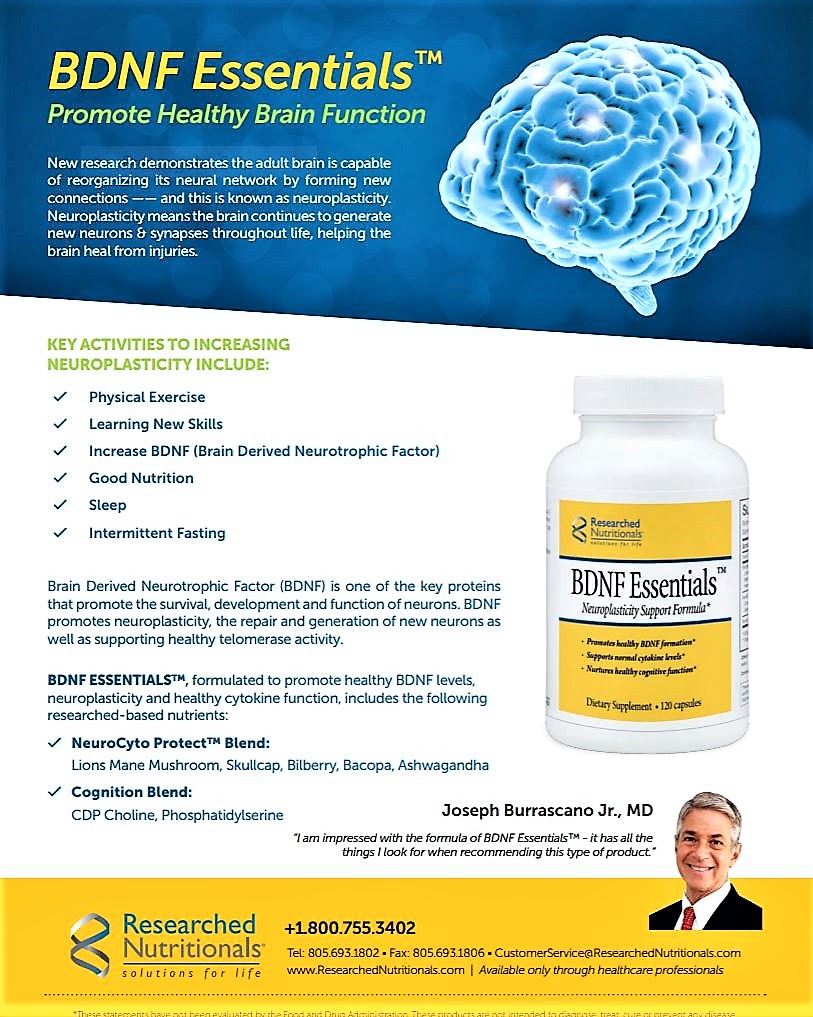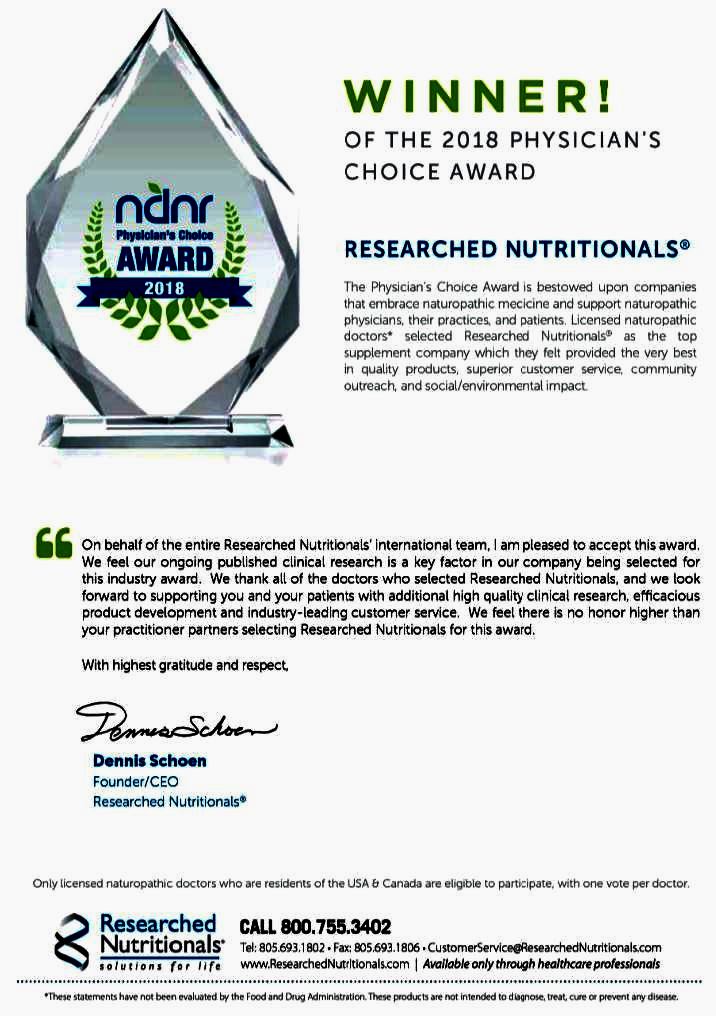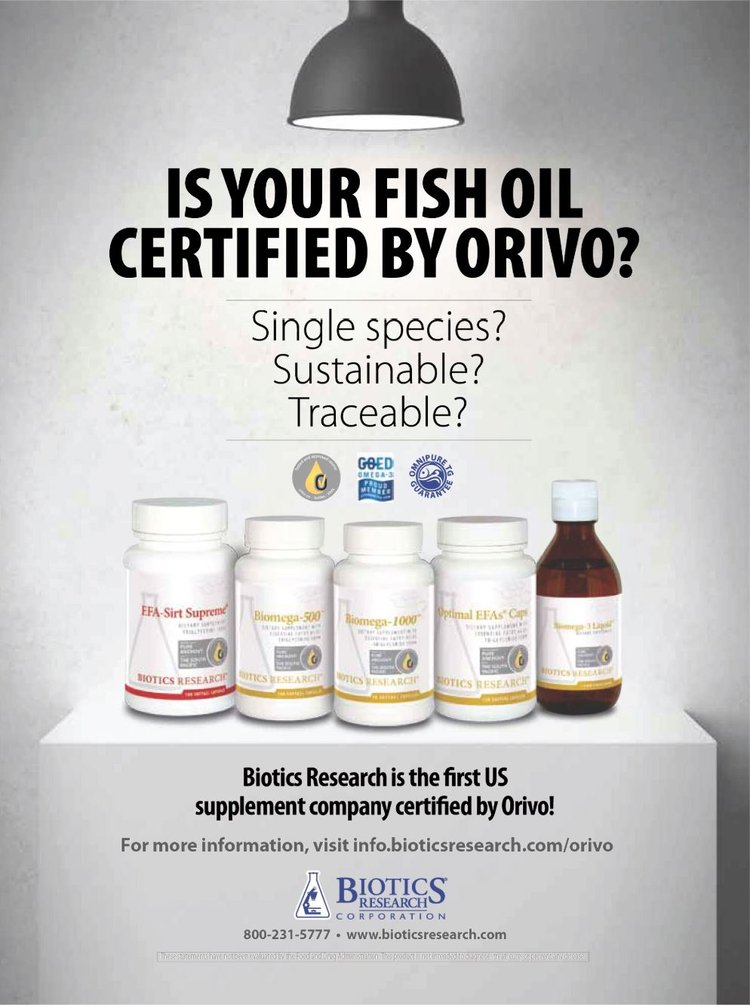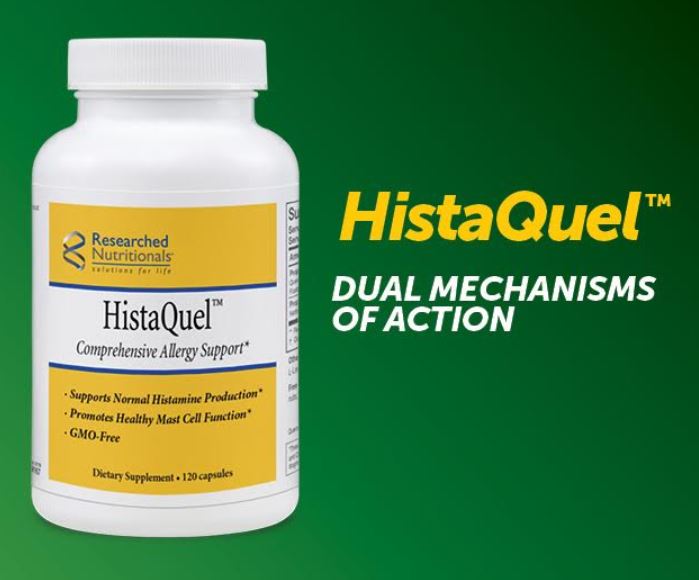By Jonathan Wright, MD
Originally appeared in Green Medicine Newsletter (January 2019)
An otherwise healthy woman in her 60s (we’ll refer to her as Audrey) started to notice mild breathing obstruction in her sinuses, “kind of like starting to catch a cold.” There was no fever, mucous discharge, or any other symptom indicating infection. The problem gradually worsened; she felt “totally congested” and developed a snore which became worse and worse. She needed two pillows under her head to sleep at night.
She visited an ENT physician who looked as far as possible into her sinuses, then ordered a “CT scan.” At follow-up, she was told she had “a bad case of nasal polyps,” and that the scan showed her sinuses were “almost totally clogged” by the polyps, with only an occasional “clear air pocket” showing on the x-ray. She was advised to have surgery to remove the polyps.
She asked the ENT physician if surgical removal of all the nasal polyps would permanently eliminate the problem. She was advised that at the very least her breathing would be a lot better for a while, but often the polyps return. She asked how often polyps return and was told “ultimately, more than half the time.” She declined surgery and started searching online for causes and alternative treatments. Unfortunately, all the websites she visited kept repeating that the cause of nasal polyps is unknown, citing allergic rhinitis, asthma, aspirin allergy, sinus infections, “something stuck in the nose.”1
The Cause of Nasal Polyps Has Been Found
Fortunately, researchers at universities in Poland,2 Iran,3, Croatia,4 India,5 and again from Iran6 have determined the actual cause of nasal polyps. (Also, fortunately, their reports were
printed in English, so I could read them!)
The cause of nasal polyps was first disclosed in 2011 in the titles of the Polish and Iranian research reports, and repeated in the 2012, and two 2016 research reports:
Poland (2011) “Detection of Helicobacter pylori and cagA gene in nasal polyps and
benign laryngeal diseases.”
Iran (2011) “Helicobacter pylori-DNA in nasal polyp tissues in comparison with inferior nasal turbinate tissues: A case control study in Tehran, Iran.”
Croatia (2012) “The significance of Helicobacter pylori in patients with nasal polyposis.”
India (2016) “Detection of Helicobacter pylori in Nasal Polyps.”
Iran (2016) “Helicobacter pylori in nasal polyp formation: A case-control study in Tehran, Iran.”
The consensus is obvious: Nasal polyps are caused by an infection with the bacteria Helicobacter pylori! It’s also obvious why polyps return in the majority of those who have their polyps surgically removed: surgery can’t possibly remove a bacterial infection!
Many Green Medicine Newsletter readers likely are aware that Helicobacter pylori (often termed “H. pylori”) is the cause of stomach ulcers, and that “modern medicine” (in this case, an ironic term) treats Helicobacter pylori with patent medicines, such as a combination of two antibiotics and a patented “acid blocker,” a combination often called “triple therapy.” So why isn’t this—or a version of it—used by “modern medicine” against nasal polyps? Although it can’t be said (or written) for certain, it’s quite possible that much of “modern medicine” isn’t even aware of the nasal polyp research cited above!
A Psoriasis Treatment to Target H. pylori
Is there a better, more targeted treatment against H. pylori than “modern medicine’s” routine “triple therapy”? This better H. pylori remedy was developed in the early 1990s by dermatologist Stephen Smith, MD, not as treatment for H. pylori, but as a remedy for psoriasis. Dr. Smith published research7 demonstrating its effectiveness in 1997. (That this treatment works by killing H. pylori only became obvious years later.)
The research reported in 1997 used the earliest form of Psorizide® (nickel dibromide) or a placebo. Patients suffering with psoriasis took either Psorizide® first and then the placebo, or the placebo first, then Psorizide®. (The patients were not informed of which one they were taking at any time; for the technically inclined, this is termed “double-blind, crossover” research.) When using Psorizide®, psoriasis was cleared to a significantly greater degree than when the placebo was used.
As Dr. Smith tells us, it “felt like a brick wall” trying to get FDA “approval,” so—because homeopathy was legalized “federally” in the 1930s and exempted from FDA jurisdiction—Dr. Smith switched to homeopathic formulations containing nickel sulfate 1x, potassium bromide 1x, and fumaric acid 1x (Psorizide Forte®)8 or nickel sulfate 1x, potassium bromide 1x, and zinc bromide 4x (Psorizide Ultra®).9 Psorizide® in its various forms had helped many individuals consulting at Tahoma Clinic to either clear or significantly improve their psoriasis.
In 1997, there was no research available that linked either psoriasis or nasal polyps with H. pylori. Research linking psoriasis and H. pylori appears to have started—as did the proof of Helicobacter (also called “H. pylori) causing stomach ulcers—with single cases. One case was reported10 in a “letter to the editor” in 2007, with before and after photographs. It was titled “Complete remission of palmoplantar [palms of the hands, soles of the feet] psoriasis through
Helicobacter pylori eradication: a case report.”
In this case report, a 35-year-old man was described (and photographed) with this severe form of psoriasis. He had been given a “breath test” (routinely used in “modern medicine” for diagnosis of H. pylori infection) which was found to be positive for H. pylori infection. He was given the usual (for “modern medicine”) H. pylori (often called “triple therapy”) treatment of amoxicillin and clarithromycin along with a stomach acid blocker, omeprazole. After six weeks of this treatment, the psoriasis started to fade; a year later, the psoriasis was completely gone. (The researchers did not state whether the treatment noted above was used for the entire year.)
Another single case was also reported11 in another “letter to the editor” published the next year. Titled “Clearance of chronic psoriasis after eradication therapy for Helicobacter pylori infection” (and accompanied by photographs), the letter described a 48-year-old woman with “severe and extensive” psoriasis affecting her everywhere except her face and scalp for “at least” the prior fifteen years. She also had been diagnosed with H. pylori infection.
She noticed a major improvement in her psoriasis starting just two weeks after beginning treatment for H. pylori. (The authors of the “letter to the editor” were careful to point out that she took no other treatment for psoriasis during that time.) They concluded: “There is no doubt that our patient’s psoriasis has improved after the eradication of the H. pylori gastric infection.”
Since these case studies were published, there have been many conflicting reports about H. pylori and psoriasis. In 2018 a “meta-analysis” of this topic was published.12 (A “meta-analysis” is not original research; it’s a comprehensive review of all available previously published research reports and reviews.) Although the reviewers could not determine exactly how H. pylori is related to psoriasis, they concluded: “This meta-analysis has shown an increased H.
pylori infection in patients with psoriasis.”
2 + 2 = 4
Nasal polyps might be cleared with Psorizide, and they were! My math skills have always been weak (just ask my math teachers). However, from time to time it seems to me that 2+2 does equal 4, so in this circumstance putting together the 2007 case reports of clearance of psoriasis with “triple therapy” for H. pylori, along with the 2011 through 2016 reports that nasal polyps are infested with H. pylori, it seemed obvious that if Psorizide® might kill the H. pylori associated with psoriasis, it might also kill the H. pylori associated with nasal polyps, and clear
them too. And likely (as Dr. Smith’s interview and my own experience observes) there would be many, many fewer adverse effects than with “triple therapy.”
Audrey listened patiently while all of that was explained and decided she’d rather try the Psorizide®; and if that didn’t work, she might consider the “triple therapy,” which—if it happened—we agreed should be reduced to “double therapy” without the acid blocking medication. “Don’t think there’s any acid produced in my nose, or anyone else’s either,” she observed.
During the first week or two of Psorizide® use, she didn’t notice any difference in her breathing. The third week she started having nosebleeds lasting for a few minutes or longer. After that she continued to have heavier and more frequent nosebleeds once or twice weekly. Many appeared to contain not only blood but also bits and pieces of pinkish tissue. Then the surprise: a heavier nosebleed containing blood and bits of tissue and an entire nasal polyp! Not kidding: she took a picture of it with her cell phone and showed me! As the nosebleeds continued, she “looked at the bright side,” saying, “I’m reducing my heart attack and stroke risk with these nosebleeds, I don’t need to donate blood until after the nosebleeds have stopped for a while!”13 (She also kept track of her blood count and serum iron—not serum ferritin—to make sure she didn’t become actually anemic, which despite the once or twice weekly nosebleeds, she didn’t.)
After almost a month of this, she couldn’t help but notice that she was breathing more easily. After two months, she was breathing significantly better; and the nosebleeds had diminished in frequency and quantity, tapering to once weekly and then stopping altogether after approximately three months. She was breathing freely, no longer snoring at all, and was able to “sleep flat” without pillows if she wanted to do that. As a precaution, she tapered the treatment to nothing over the next few weeks, has had no more problems breathing, and no recurrence at all of nosebleeds in the last two years.
How Does Psorizide® Kill H. pylori?
At present, there’s no verified “mechanism of action” (scientese for “how the **** does this work”) for how Psorizide® kills H. pylori. There’s at least one clue though: H. pylori likes nickel! No, not kidding, H. pylori really does! According to one authority: “It [nickel]…. is an essential element and critical for the pathogenicity of Helicobacter pylori. Nickel is essential for the activity of two of H. pylori’s essential enzymes, urease and hydrogenase. Several studies revealed that these enzymes are important for colonization of the host gastric mucosa.”14 [In English, nickel is essential for H. pylori to invade the cells lining the stomach, and (presumably) nasal polyps.] Another research report15 tells us that H. pylori bacteria store nickel inside themselves to help them invade tissues!
While nickel is very important for H. pylori, bromide appears to be detrimental to this bacteria. As Dr. Smith says in the interview, Israeli researchers had reported that in individuals successfully treated for psoriasis at the “Dead Sea” in Israel, serum bromide levels were significantly higher after treatment than before treatment. It’s just a thought—not proven at all—that H. pylori likes nickel so much that it gobbles the nickel and bromide together, and the bromide kills the H. pylori.
Facts are that Psorizide® has both the nickel that H. pylori likes a lot and the bromide which appears to kill it. Perhaps the other natural components (zinc, fumaric acid, sulfate) in the other homeopathic forms of Psorizide® contribute to killing it too! Only time and further research will tell us.
For now, Psorizide®—Psorizide Forte®, specifically, for Audrey—has cleared one case of nasal polyps, and no signs or symptoms of them have returned in the two years since they departed via nosebleeds rather than being removed surgically.
If you have nasal polyps, you might consider showing this article to your physician. If you’re a physician, this treatment for nasal polyps—which appears to treat the cause—might be worth considering for your patients with nasal polyps! And of course, warn them of potential nosebleeds while the polyps—and the Helicobacter pylori that research has reported nasal polyps to contain—are departing.
The author has no financial connection with the product Psorizide®
or the company which manufactures Psorizide®

A Harvard University and University of Michigan graduate, Dr. Jonathan V. Wright, MD (Hon. ND), was also awarded an honorary ND by Bastyr University (1993). He continues to be a forerunner in research and application of natural treatments for healthy aging and illness. He has taught natural biochemical medical treatments since 1983 to thousands of physicians in the USA, Europe, and Japan. He was the first to develop and introduce the use of comprehensive patterns of bio-identical hormones (including estrogens, progesterone, DHEA and testosterone) in 1982 and directed the development of tests to ensure their safe use. Other accomplishments include originating successful natural treatment for elimination of childhood asthma, developing natural treatment to stop vision loss and/or improve vision in the majority of individuals with “dry” macular degeneration, pioneering the use of aldosterone to reverse age-related hearing loss, discovering the effects of iodine on estrogen metabolism and cobalt on steroid detoxification, and popularizing the use of the natural sugar D-mannose for elimination of 85-90% of urinary tract infections. He also originated effective natural treatment for seborrheic dermatitis, allergic and viral conjunctivitis, Osgood-Schlatter’s disease, and treatment that improves bone density in the large majority of those with osteoporosis. Dr. Wright serves as medical director of Tahoma Clinic in Tukwila, Washington (www.TahomaClinic.com).
References
1. For a recent example, see www.webmd.com/allergies/nasal-polyps-symptoms-and -treatments#1
2. Burduk PK, et al. Detection of Helicobacter pylori and cagA gene in nasal polyps and benign laryngeal diseases. Arch Med Res. 2011 Nov;42(8):686-9.
3. Samileh Noorbakhsh, Azardokht Tabatabaei, Mohammad Farhadi, and Ahmad Reza Shamshiri Helicobacter pylori-DNA in nasal polyp tissues in comparison with inferior nasal turbinate tissues: A case control study in Tehran, Iran. Journal of Infectious Diseases and Immunity Vol. 3(4), pp.73-78, April, 2011
4. Včeva A, et al. The significance of Helicobacter pylori in patients with nasal polyposis. Med Glas Ljekkomore Zenicko-dobojkantona. 2012 Aug;9(2):281-6.
5. Bansal D, et al. Detection of Helicobacter pylori in Nasal Polyps. Head and Neck Pathol. 2016;10:306–313
6. Shokrollahi M, et al. Role of Helicobacter pylori in nasal polyp formation: A case-control study in Tehran, Iran. J Otolaryngology Advances. January 2016.
7. Smith SA, et al. Improvement of Psoriasis with Nickel Dibromide. Arch Dermatol. 1997;133:661-663.
8. www.drugs.com/pro/psorizide-forte.html
9. www.drugs.com/pro/psorizide-ultra.html
10. Hubner AM, Tenbaum SP. Complete remission of palmoplantar psoriasis through Helicobacter pylori eradication: a case report. Clinical and Experimental Dermatology.
2007;33:339-340
11. Ali M, Whitehead M. Clearance of chronic psoriasis after eradication therapy for Helicobacter pylori infection. J European Academy of Dermatology and Venereology. 2008:22;745-775
12. Yong WC, Upala S, Sanguankeo A. Association between Psoriasis and Helicobacter pylori Infection: A Systematic Review and Meta-analysis. Indian J Dermatol. 2018 May-June;63(3): 193–200.
13. See: The Origin of Atherosclerosis by Kenneth Kensey, MD, and Young Cho, PhD, and/or The Blood Thinner Cure also by Kenneth Kensey, MD; or see “Dramatically Reduce Your Risk f Heart Attack and Stroke” published in Green Medicine Newsletter, June 2016, available @ www.greenmedicinenewsletter.com
14. Palizban A, Saghaie L. Synthesis and evaluation of the complex-forming ability of hydroxypyranones and hydroxypyridinones with Ni (II) as possible inhibitors for urease enzyme in Helicobacter pylori. Res Pharm Sci. 2016 Jul; 11(4): 332–342.
15. Benoit SL, Miller EF, Maier RJ. Helicobacter pylori Stores Nickel to Aid Its Host Colonization. Infection and Immunity. 2013;81(2):580-584







